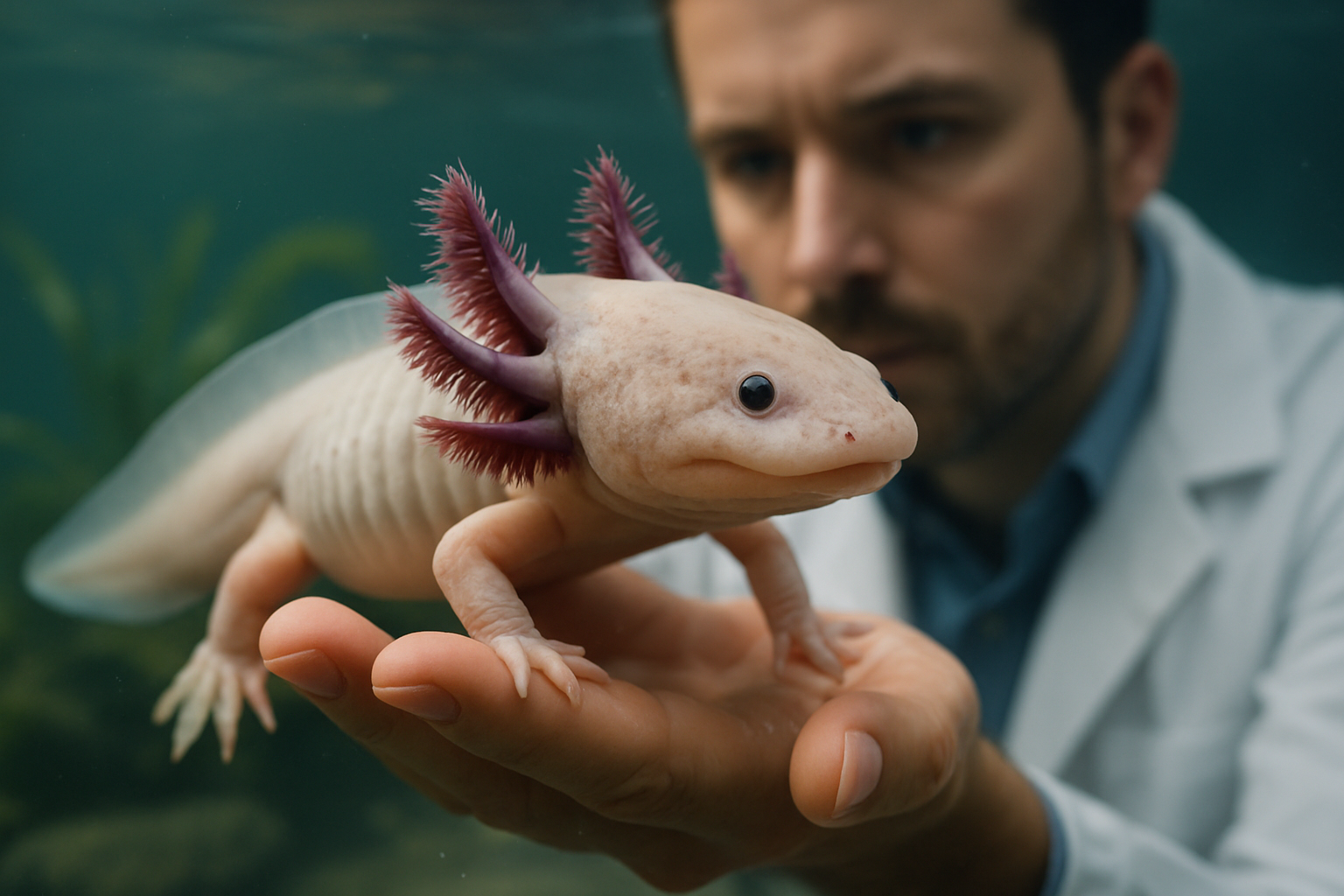Decoding the Enigmatic World of Axolotl Regeneration
Introduction: Step into the extraordinary realm of axolotls, where regeneration defies the limits of biology. These captivating salamanders possess an unparalleled ability to regrow lost limbs, organs, and even parts of their brain. Dive deep into the fascinating world of axolotl regeneration, exploring the science behind their remarkable healing powers and the potential implications for human medicine.

Unraveling the Secrets of Axolotl Regeneration
The regenerative process in axolotls is a complex interplay of cellular and genetic mechanisms. When an axolotl loses a limb, a mass of cells called a blastema forms at the site of injury. This blastema contains dedifferentiated cells that can transform into various cell types needed to rebuild the lost appendage. The process is guided by a sophisticated network of genes and signaling molecules that orchestrate the regrowth of bones, muscles, nerves, and blood vessels.
The Genetic Blueprint of Regeneration
Recent advancements in genomic research have shed light on the genetic underpinnings of axolotl regeneration. Scientists have identified key genes and pathways involved in the regenerative process, including those responsible for cell proliferation, differentiation, and patterning. The axolotl genome, which is ten times larger than the human genome, contains unique genetic elements that contribute to its remarkable healing abilities. Understanding these genetic factors could potentially unlock new avenues for regenerative medicine in humans.
Applications in Human Medicine
The study of axolotl regeneration holds immense promise for human medicine. Researchers are exploring ways to apply the principles of axolotl regeneration to develop new treatments for injuries, organ failure, and degenerative diseases. While humans possess limited regenerative capabilities, understanding the molecular mechanisms behind axolotl regeneration could lead to breakthroughs in tissue engineering, wound healing, and organ transplantation. The potential to regrow damaged heart tissue or spinal cord injuries in humans remains an exciting frontier in medical research.
Conservation Efforts and Captive Breeding
Despite their scientific importance, axolotls face significant threats in their natural habitat. Pollution, habitat loss, and the introduction of invasive species have pushed wild axolotl populations to the brink of extinction. Conservation efforts are underway to protect the remaining wild populations and their fragile ecosystem. Additionally, captive breeding programs in research facilities and aquariums worldwide play a crucial role in maintaining genetic diversity and ensuring the survival of this species for future scientific study.
The Future of Axolotl Research
As our understanding of axolotl regeneration deepens, new questions and possibilities emerge. Scientists are now investigating the potential of using gene editing techniques to enhance regenerative capabilities in other species, including humans. The development of advanced imaging technologies and single-cell sequencing methods promises to reveal even more intricate details of the regeneration process. As research progresses, the axolotl continues to inspire and challenge our understanding of biological regeneration, offering hope for groundbreaking medical advancements in the years to come.





